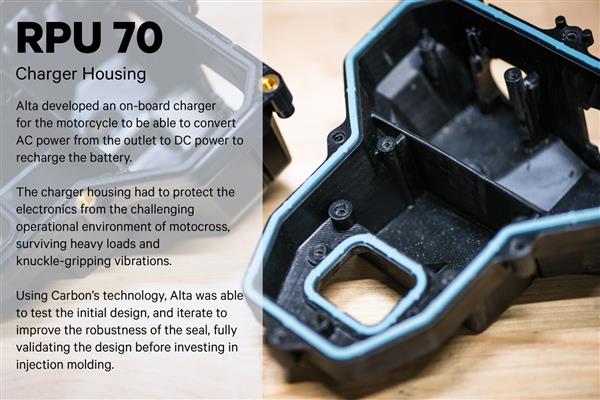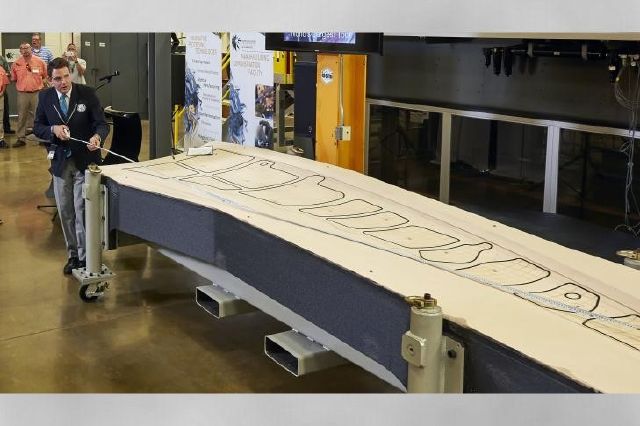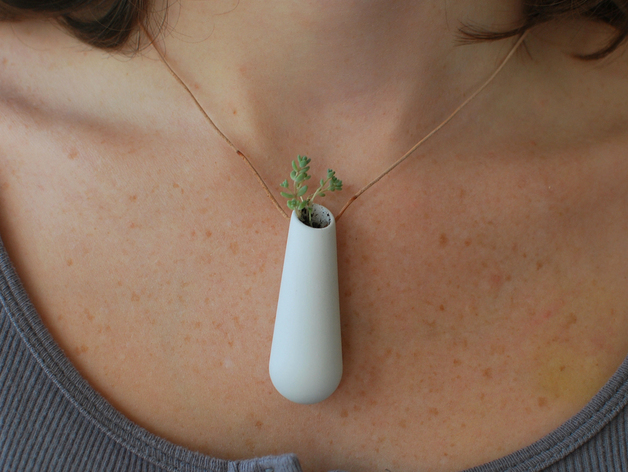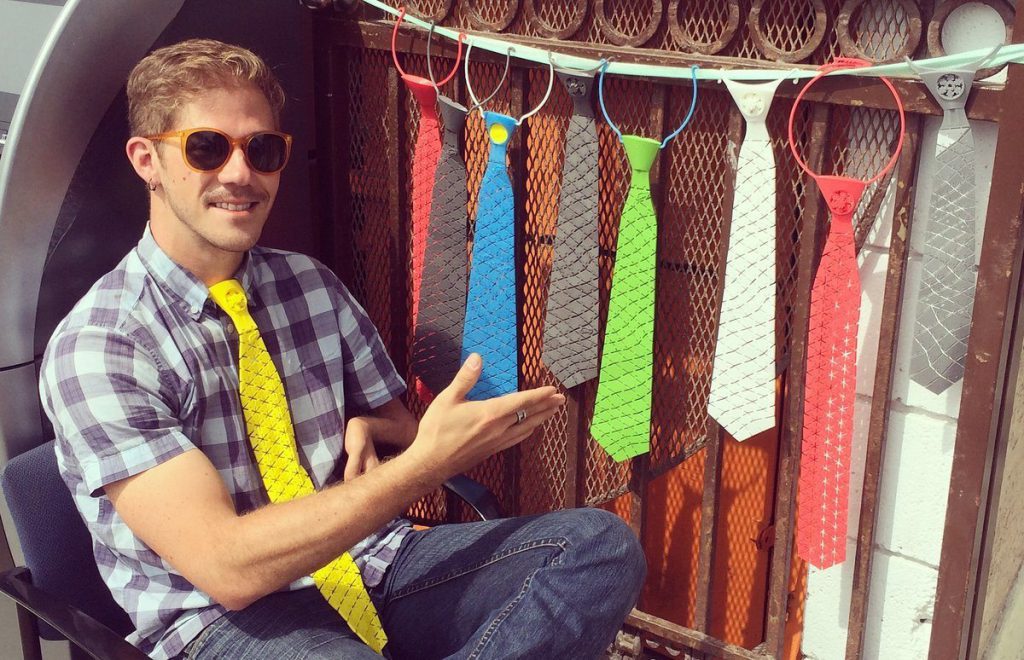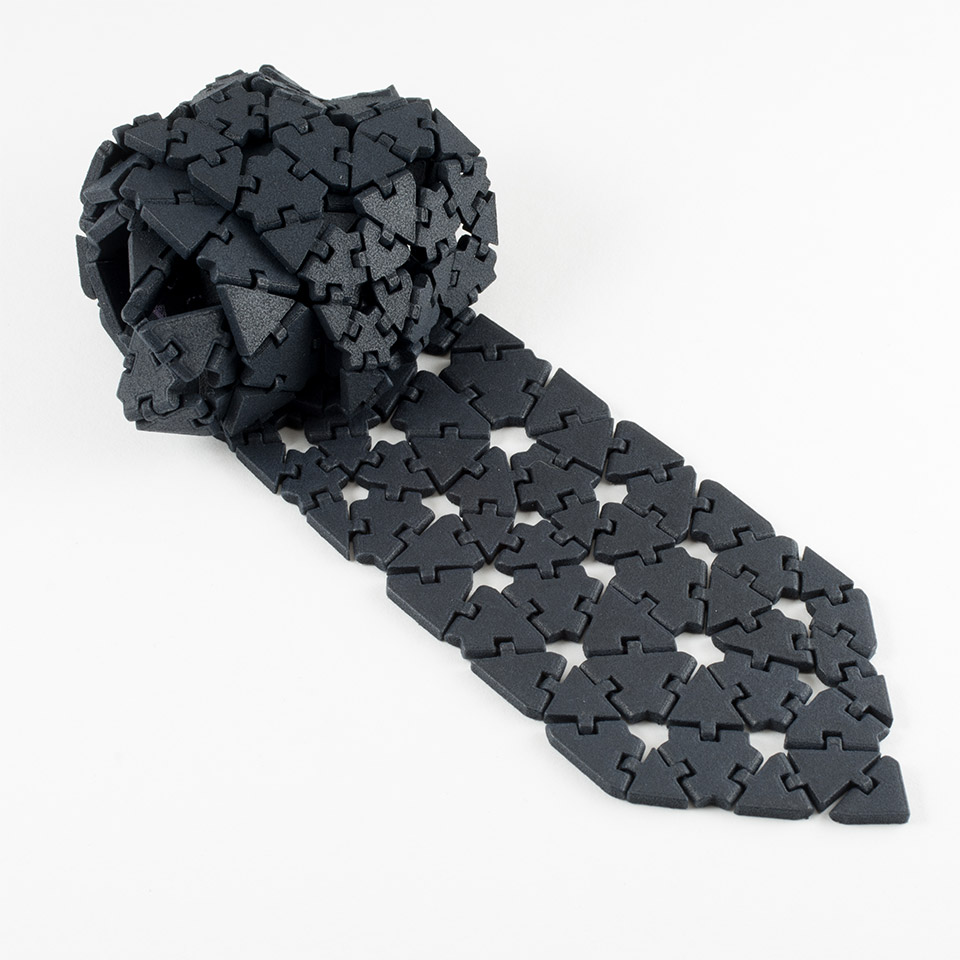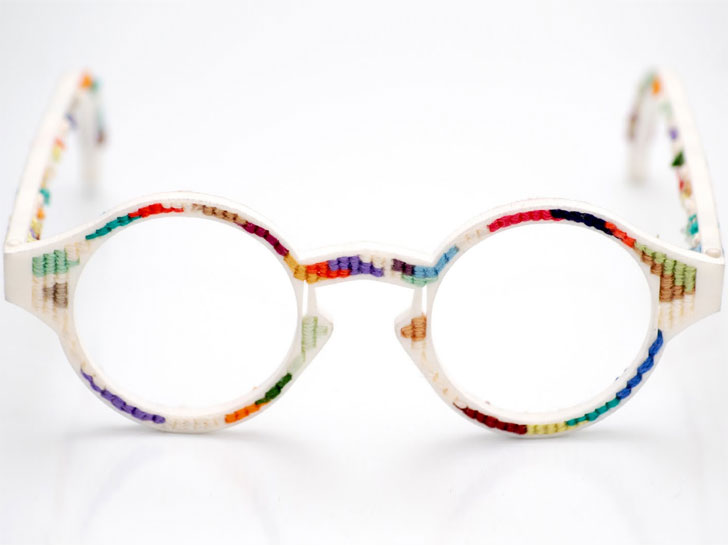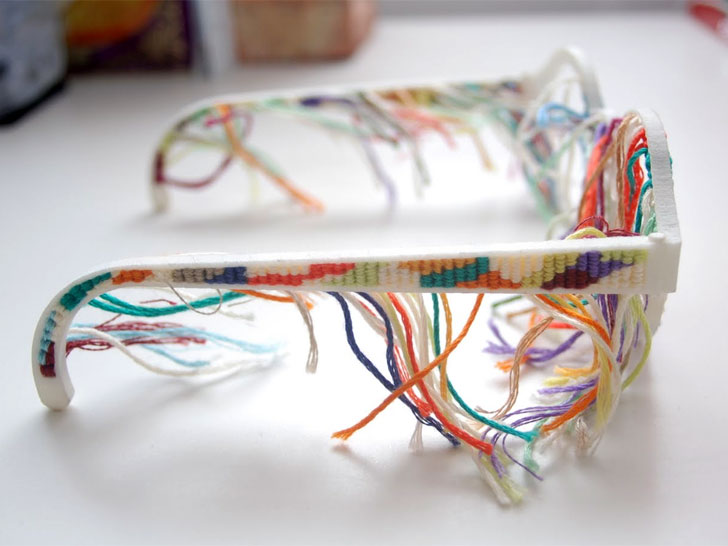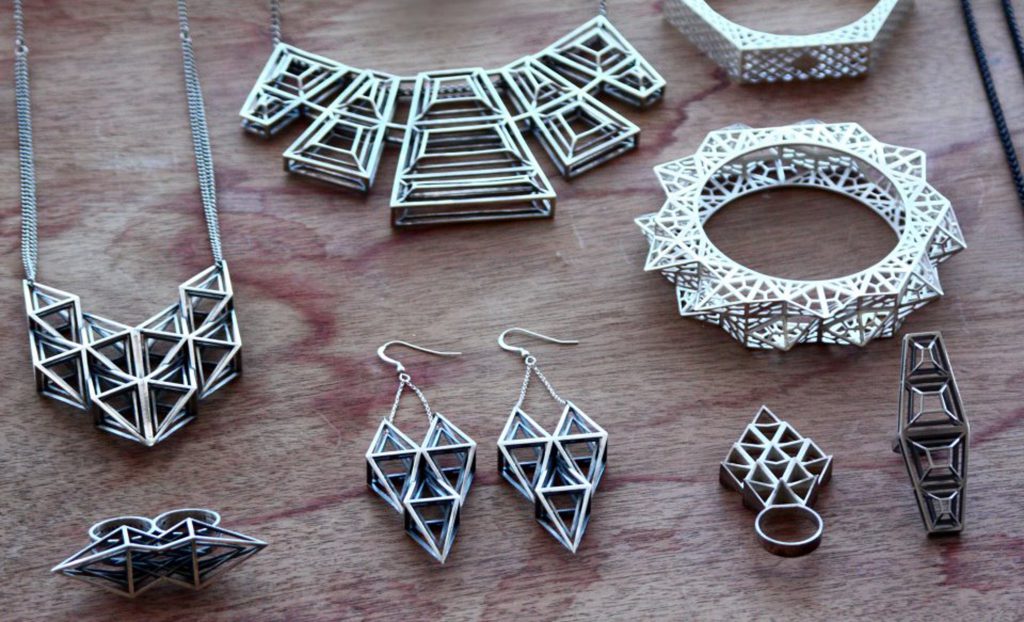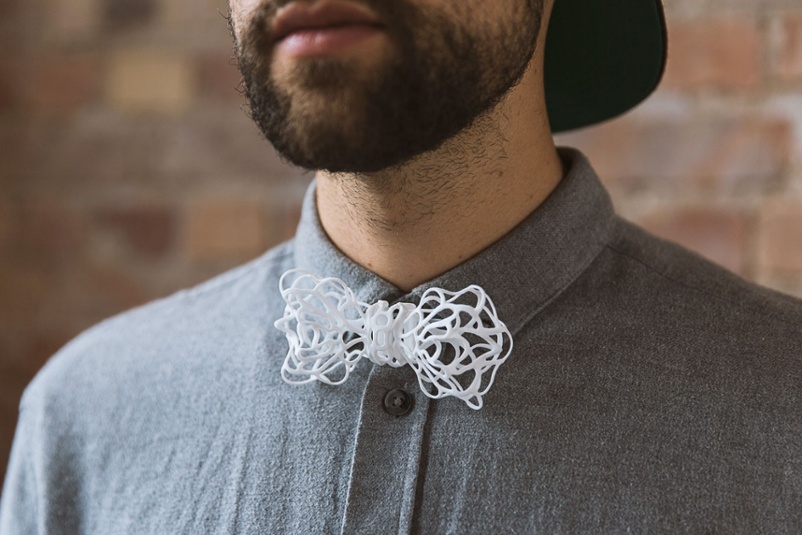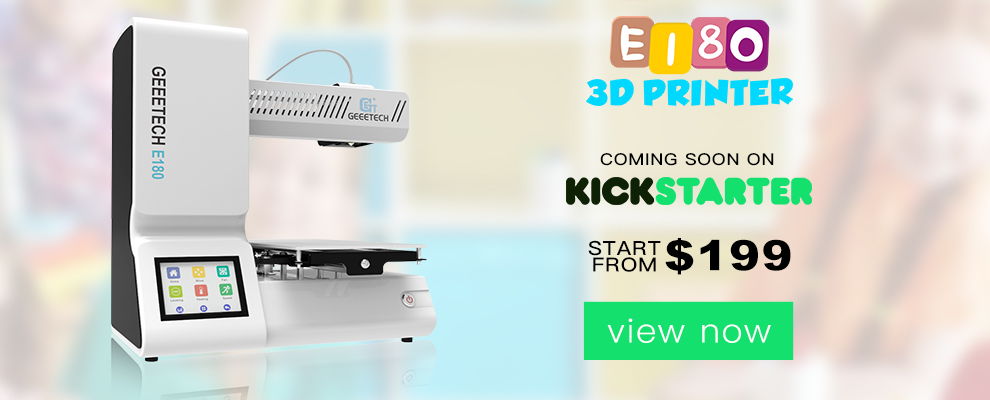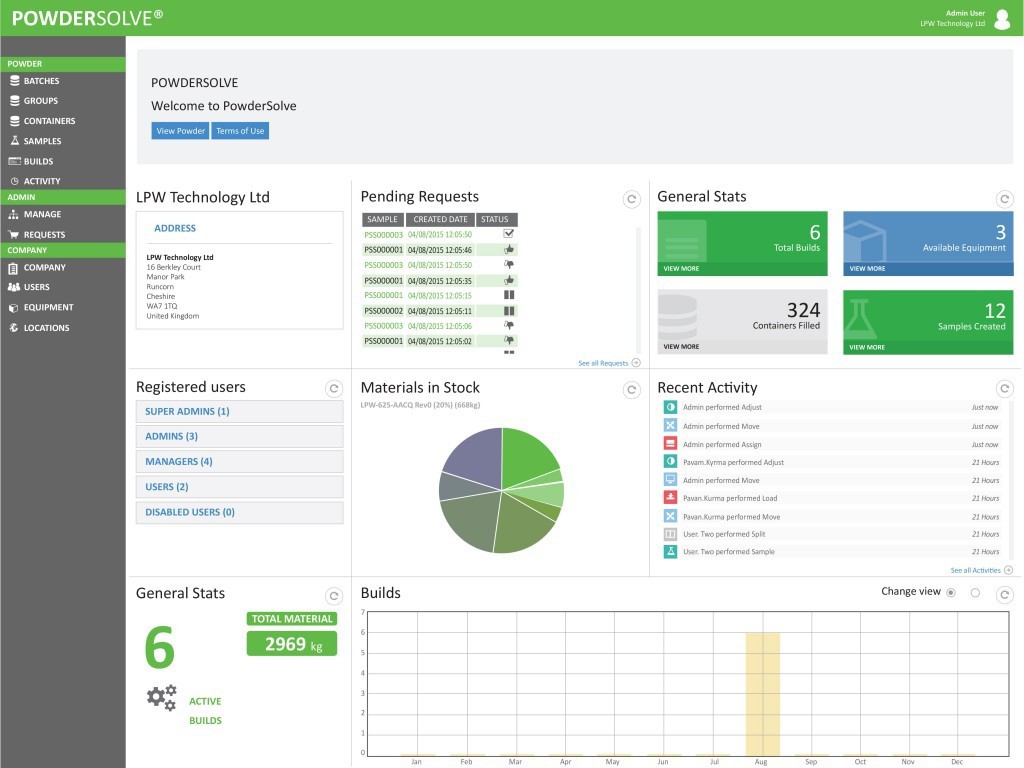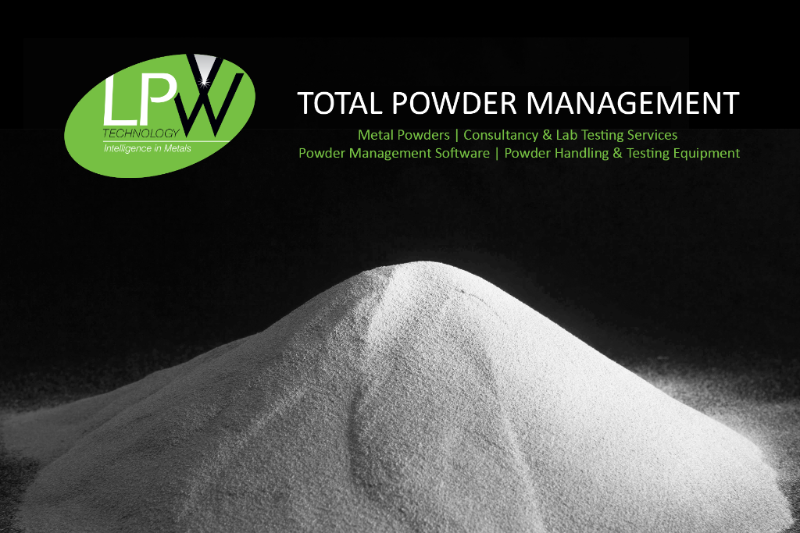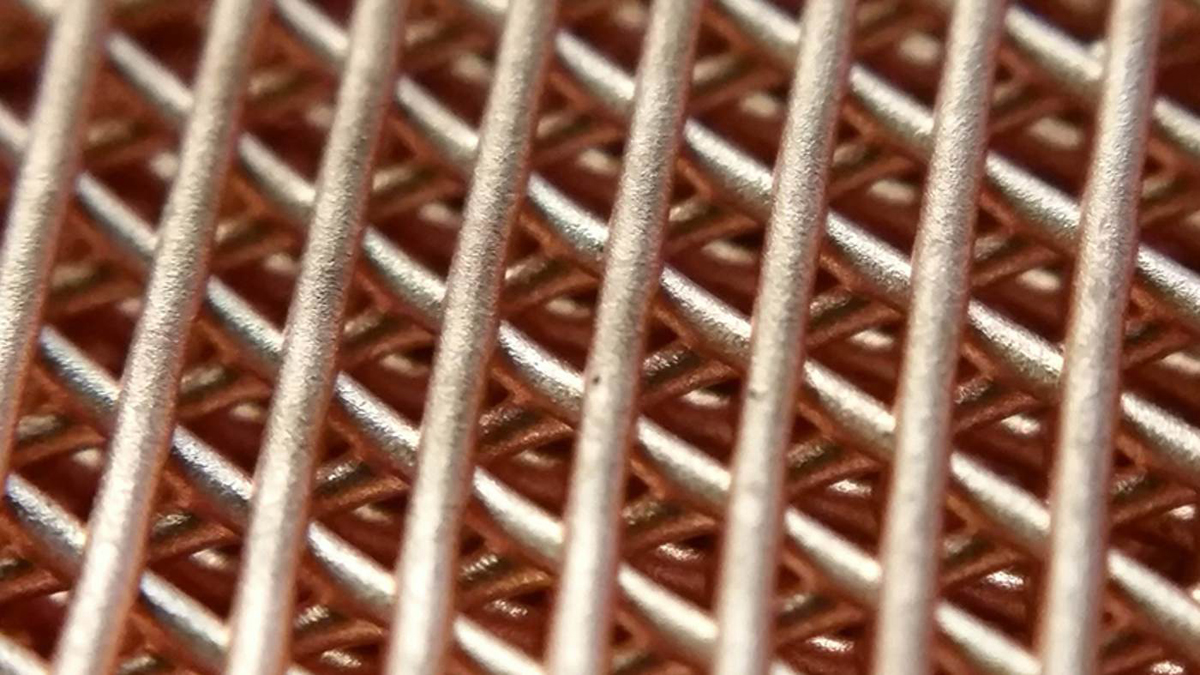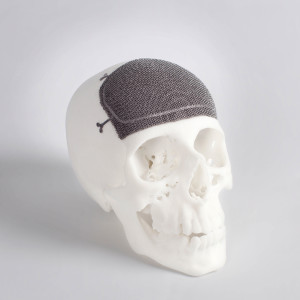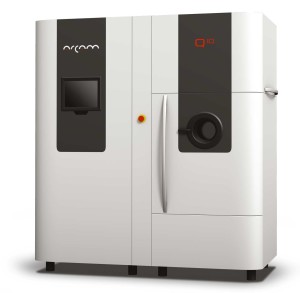AM can be implemented throughout all of the steps of the manufacturing process, from creating prototypes and producing supporting tools like jigs and fixtures to end part production.
https://www.youtube.com/watch?v=XWFF8qr0pyo
Visual Prototypes
When it was invented, 3D printing was mentioned as rapid prototyping, a method for automating and reducing the labor required to create a prototype model for design validation. Since then, it has found use in a number of other applications, but the technology is still widely implemented to create visual models and functional prototypes.
For the production of visual models, 3D printing has evolved more. Though it’s possible to create highly detailed prints with technologies like stereolithography (SLA), full-color 3D printing with binder jetting, paper 3D printing, and material jetting can achieve a vibrancy impossible with other technologies.
ColorJet Printing
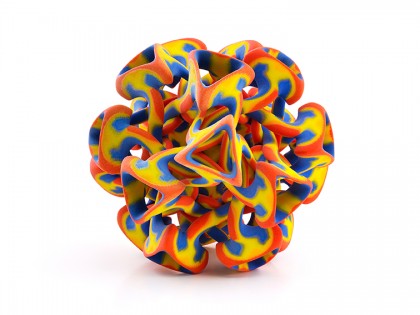
ColorJet Printing (CJP), a binder jetting technology from 3D Systems, involves the deposition of a liquid binding agent and CMYK inks onto a bed of gypsum powder, resulting in the creation of full-color, sandstone-like models. Though the process is different, PolyJet, from Stratasys, takes this a step further with the ability to alter physical properties such as flexibility and transparency. PolyJet is a material jetting technology that deposits photocurable resins, which are then hardened with a UV lamp.
Mcor’s paper 3D printer
Mcor’s paper 3D printing technology unable to achieve the same geometric complexity but the parts are made from paper, making it eco- friendly. This process sees CMYK deposited onto white paper, which is then pasted to the previous layer and cut with a tungsten carbide blade.
Functional Prototypes
For testing the function of a design, color quality may not be so important. For example, testing a living hinge might require 3D printing with a durable thermoplastic, such as nylon, or with a rubber-like photopolymer, printed with material jetting or vat photopolymerization technologies, such as SLA or digital light processing (DLP). For wind tunnel testing, a number of technologies work, but the part will need to be post-processed in such a way that aerodynamic properties of a part aren’t inhibited by the striation made through the 3D printing process. For this reason, a high-resolution technology may be preferred.
Alta Motors All-Electric Motorbikes
Alta Motors is an electric motorcycle manufacturer that has begun working to use 3D printing to prototype parts for its bikes. In designing the firm’s Redshift motorcycle, Alta Motors turned to 3D printing service bureau The Technology House (TTH) to iterate functional prototypes quickly for parts that were to be mass manufactured. TTH relied on continuous liquid interface production (CLIP), an ultrafast 3D printing process from Carbon, to 3D print a number of parts.
Tooling
As a design moves from the concept phase to the production phase, a manufacturing operation may implement 3D printing for the fabrication of custom tools that aid in the production process. This can include anything from guides for precise drilling, dies for forming or cutting the raw material into a specific shape and measurement tools, like gauges, to jigs and fixtures that hold a part in place while other operations are performed.
3D printing may be used directly or indirectly in the creation of tooling. In the case of indirectly fabricating a tool with AM, a tool may be made by coating a 3D-printed component in rubber, which is then used to cast the tool itself.
When tools are custom made for a new manufacturing job, a business may need a third-party service provider, which may rely on traditional manufacturing technologies, such as CNC machining, to create the tooling. This process can be costly and time-consuming, with the business waiting weeks to months for the tools to be shipped in order to even begin manufacturing.
Patterns, Core, and Molds
3D printing is also used to produce objects that will ultimately be cast in metal. On a small scale, this can mean lost-wax casting models for jewelry and dental crowns. On a large scale, this can mean creating sand cores for casting complete engine parts.
In the process of lost-wax casting, a positive is 3D printed in a castable material. It is then submerged in a specialty investment material and burned out in a kiln. The result is a mold that is filled with molten metal to create a metal part. SLA, DLP, and material jetting technology, like the wax 3D printing process created by Solidscape, are ideal for this process, as they are capable of producing finely detailed prints with a high burnout.
https://www.youtube.com/watch?v=15AmryIYu4k
For larger parts, binder jetting processes, like those from Voxeljet and ExOne, may be implemented to 3D print sand cores and molds. Binder jetting involves the deposition of a binder material onto a bed of powder, including sand, layer by layer until the print is complete. In sand casting, this object may then be placed into a molding box, which is filled with molten metal and, once cooled, broken apart to reveal the final metal object.
Due to the speed, quality and cost of AM, the technology is best suited for the production of specialty parts in smaller batches, rather than mass-manufactured goods. For this reason, end products that are made with 3D printing have usually been made that way for the good cause.
Credits: Google, discbum.com, engineering.com, youtube.com
]]>Wearable Planter Jewelry
Love plants? You can now take your precious plants with you wherever you go thanks to these unique jewelry planters made by Colleen Jordan. The pendant itself is a miniature vase with holes through it which you can attach a cord. So simple yet so creative! You can make your very own Vase pendant thanks to files available on Thingiverse here.
And if you’re looking for a pair of earrings to match then Colleen has you covered with these tiny beads that can be used as mini planters. Just print it out, add your plant and take your lil’ buddy with you on your adventures! Find these wearable planter beads here.
Neckties
While 3D printed clothing hasn’t taken over our closets yet, we’ll admit we’re pretty fascinated with the concept. And one thing we can’t wait to try are these 3d printed neckties that are quirky, cool and definitely a topic of conversation.
What’s so special about them? For starters, you don’t have to struggle with tying that tricky knot. All you need to do is slip them on. The tie itself is made from pieces of PLA linked together in such a way that they’re flexible but also very durable. Creator Boris Rabinovich even put them to the test by tossing them in the washing machine but they returned unscathed!
Tapestry Eyeglasses
3D Printing your eye-glasses are cool but how about taking making it a fun art project too?
Chloe McCormick and Nicholas O’Donnell-Hoare collaborated to create these cute and quirky eye-glasses which can be customized to suit your need! All you need are your favorite colors of yarn.
There are holes included in the frame of these eye-glasses so you can weave your own pattern using different colored yarn. A pair of glasses and a fun DIY project all in one, we really want to try these out.
Geometric Jewelry
As stunning as it looks, whats really impressive about 3D printed jewelry is you can print out these designs not only in PLA and ABS but also in metals which is really revolutionizing the way we look at jewelry.
Traditional gold and silver designs are now making way for geometric patterns that are minimalistic yet stunning to look at. In fact, they almost like jewelry of the future!
Bowties
If your friends and family didn’t know just how much you love 3d printing, then they definitely will once you turn up to an event wearing this. These intricate bow ties are much easier to wear than their traditional counterparts but we’re not complaining.
Since 3d printing is all about unleashing your creative ideas the possibilities are limitless. Check out Thingiverse for some quirky designs or buy one online. You can even sit down and design your very own design and flaunt your love for 3d printing!
Cufflinks
One of the most magical moments as a 3D printing enthusiast is when you realize you can 3D print literally ANYTHING onto the most mundane objects and breathe life into them all over again. And these Batman cufflinks are the perfect example. Luckily you can print your very own thanks to the files available on Thingiverse. Find them here
Credits: thingiverse.com, inhabitat.com, my23skidoo.wordpress.com, meltewerk.com
]]>3D printing technology is a boon to facilitate the development of STEAM education, as testified by unlimited successful teaching cases worldwide. Geeetech, a Shenzhen based 3D printer manufacturer, is gearing up to launch a crowdfunding campaign for its new education-based 3D printer, E180, priced at $199, 33% off its retail price.
The aim of this Kickstarter funding is to encourage more and more like-minded friends to bring this enlightening technology to children and the classroom. Through hands-on play, children could grow up with confidence, perseverance, and systematic goal-completion competence and prepare themselves for future career planning.
Engineered to be affordable and reliable, E180 comes fully assembled and exquisitely crafted, with its black and white color combination imparting a touch of simplicity and elegance. Its necessary components, such as motors, fans, power supply units, control board and wires, are entirely enclosed in the frame, ensuring that this tiny device fits to the classroom and your home in great harmony. Besides, using PLA filament, a kind of safe and environment-friendly printing materials, adds to the security coefficient of E180.
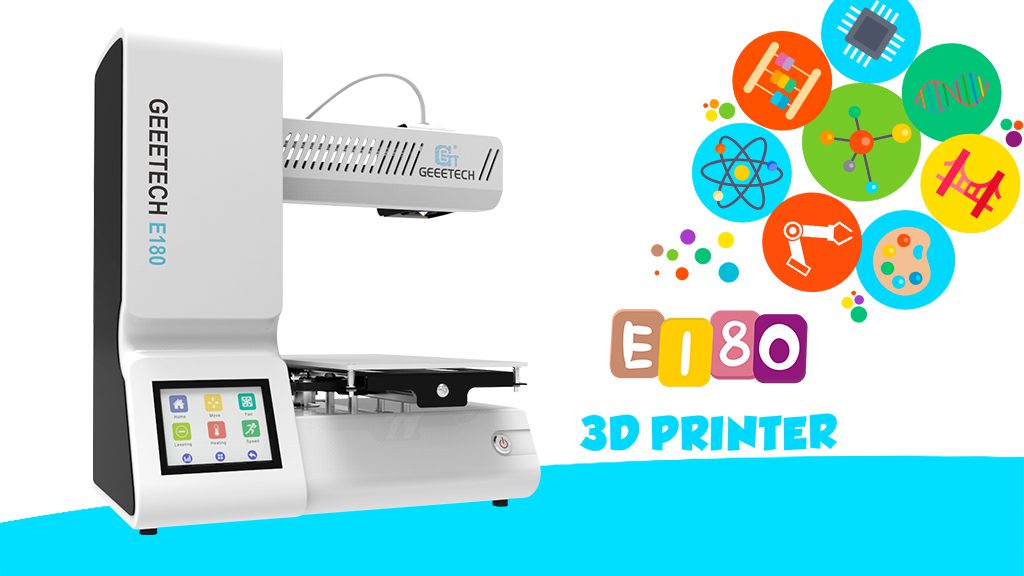
What sets E180 apart from other congeneric products are its practical and convenient features. This new machine is characterized with a 3.2″ full-color touch screen, break-resuming capability, Wi-Fi connectivity, cloud 3D printing solution, EasyPrint 3D App and its self-developed printing and control software EasyPrint 3D. All these functions are iterated for many times, for the purpose of rendering E180 easy-to-manage and suitable for teaching and learning.
With the vision of making children more enthusiastic about science, technology, engineering, art and math by employing 3D printing technology, Geeetch’s crowdfunding for E180, such a considerate learning aide and cost-efficient option for kids, will start soon. Please invest your own effort to bring this funding campaign to life~ Children’s education is in need of YOU! Check the Kickstarter page.
Here is a video of the new printer in action. We are looking forward to getting our hands on one to test and review and to use it benefit stem education programs in our area.
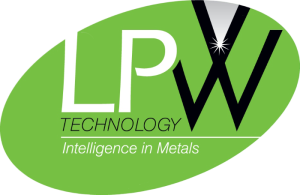
The casual user of a desktop 3D printer may not think of 3D printing as something that requires stringent regulations, and, when it comes to casual desktop use, it isn’t. Industrial additive manufacturing, however, particularly metal additive manufacturing, is a different beast. Because metal 3D printing is used for critical equipment in industries like medicine and aerospace, safety is of the utmost importance, and so the metal powders used in additive manufacturing need to be high quality, free of contaminants and material degradation.
LPW Technology is one of the leading suppliers of metal powders for the additive manufacturing industry, and they’re well aware of the things that can go wrong with metal powders, as well as how to prevent and fix them. Last year, they introduced theirPOWDERSOLVE software at RAPID 2015, and it’s now on the market. POWDERSOLVE is a comprehensive quality control tool that allows users to fully track, test and monitor their powder supplies, which is a must for industrial manufacturers, particularly in the medical and aerospace fields.
Why is traceability so important? If you’re in a plane with 3D printed engine components, you’re going to want to know that those components were printed with fresh, quality materials that won’t corrode. Likewise, if you’re going into surgery, you better hope that nothing contaminated the powder used to print any of the metal tools being used inside your body. Thus, manufacturers who 3D print with metal must prove that their powder supplies have been carefully monitored from beginning to end.
POWDERSOLVE helps industrial clients to more easily track and monitor their powder supplies. The software logs every batch of powder from the time it was blended, as well as who blended it and what the material percentages are. From there, users can track the powders’ use, reuse, what products were made with each batch, and any changes to their material properties over time. Reports are automatically generated, as are labels containing unique, traceable codes for every batch of powder.
“POWDERSOLVE does exactly as the name suggests – it solves the problems created by powder traceability,” said Phil Kilburn, Commercial Director for LPW. “This unique software takes away the unknowns, offers the user total control and removes any ambiguity from the manufacturing process. It is another example of LPW listening to the problems of their customers and offering a solution. There is great demand for POWDERSOLVE.”
The software is also proving to be valuable to research institutions studying the effects of powder degradation and changing material properties during metal additive manufacturing. Test results can be easily and securely stored within the software, and all activity is automatically logged so that no one can tamper with data without detection. While POWDERSOLVE was designed as a standalone software program, it can also be customized to link with established QMS and ERP systems.
POWDERSOLVE is part of LPW’s Total Powder Management (TPM) System, which is the company’s own system of monitoring every powder they supply, from initial production to disposal. LPW holds themselves to a very high standard of accountability, and POWDERSOLVE enables their clients to do the same.
—The article is from 3D PRINT.COM
]]>
In order to bring down the cost of metal 3D printing, researchers and industrial R&D divisions are working on new approaches to the technology that forgo lasers and electron beams for other methods altogether. While XJet, in Israel, will be introducing its metal inkjetting to the world, hopefully, sometime soon, Northwester University scientists have their own metal inks that they say they can 3D print similarly to fused filament fabrication. We’ve actually covered the work of Ramille Shah, assistant professor of materials science and engineering in the McCormick School of Engineering and of surgery in the Feinberg School of Medicine, in the past, but, in a recent study published in the journal Advanced Functional Materials, Shah and her team describe the process in even greater depth.
Rather than use powderbed, laser sintering or direct energy deposition, the team blended together metal powders, solvents, and an elastomer binder to be extruded through a nozzle. After extrusion, the parts are sintered in a furnace, leaving a metal object. The process allows for the use of metal alloys and compounds and results in more uniform parts, printed more quickly, and at a lower price than other metal printing methods.
Prof. Shah commented on the technology by saying, “Our method greatly expands the architectures and metals we’re able to print, which really opens the door for a lot of different applications.” Fellow professor David Dunand, adds, “By uncoupling the printing and the sintering, it appears that we have complicated the process. But, in fact, it has liberated us as each step is much easier separately than the combined approach.”
Additionally, the “green bodies” of the printed objects, a term used to describe the objects pre-sintering, are flexible, enabling post-printing manipulation. Shah elaborates, “They’re foldable, bendable, and can be hundreds of layers thick without crumbling. It allows us to create a lot of different architectures that haven’t really been seen in metal 3D printing.”
And, because the process does not rely on the strict environmental settings required by DMLS or EBM, they were able to print with safer, more stable metal oxides, like rust, which can be returned to their pure metal states with the application of hydrogen before sintering is performed. This is exciting from an environmental and cost perspective, as old, metal parts can be recycled into 3D printed, iron parts. Dunand explains, “It might seem like we are needlessly complicating things by adding a third reduction step where we turn rust into iron. But this opens up possibilities for using very cheap oxide powders rather than corresponding expensive metal powders. It’s hard to find something cheaper than rust.”
The researchers say that they could use the technology to, not only create custom metal parts, but batteries, fuel cells, medical implants, and more. All of this could also potentially be performed on location at job sites, which would not necessarily be viable for the large, costly machines relying on other technologies.
The sintering process executed by the Northwestern team is not entirely new, with companies like ExOne relying on the same technique to process their powderbed, 3D printed parts. In fact, there are those even trying to extrude 3D printed metals as filaments and pastes, before burning out the binder to create dense parts. For instance, after a successful Indiegogo campaign, the Mini Metal Maker 3D prints metal infused clay. All of this points towards a time when metal 3D printing will not be as costly as it once was and, with Shah’s talented team, the future of the technology is looking as shiny as a brand, new penny.
—The article is from 3D Printing Industry
]]>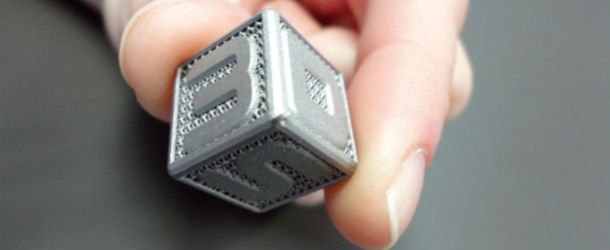
3D Systems has announced a partnership with the Pennsylvania State University to research and further develop direct metal printing technology. The research will take place at the Center for Innovative Materials Processing through Direct Digital Deposition, which acts as Defense Advanced Research Projects Agency’s official demonstration facility for additive manufacturing technology. In addition to DARPA, it is also a major section of the Department of Defense network of university research centers and heavily support the aerospace and defense industries.
The lab will be populated by a team of direct metal printing experts from Penn State and 3D Systems, who will continue developing 3D Systems’ current ProX Direct Metal Printing technology. The goal of the partnership is to continue to advance and develop the creation of high-resolution DMP technology and to provide training using 3D Systems’ existing DMP technology for use by the U.S. defense and aerospace companies. It will also enable DARPA and other government agencies, like the Navy, Air Force and America Makes, to sponsor defense contractor projects that require the use of DMP technologies.
]]>
All over the world people are living and working longer than ever before, resulting in a lifestyle that tends to be more active. However often an extended active lifestyle puts strain on the human body in expected ways, resulting in the need for joint replacement and enhancements. This need is driving the rapid advancement of new surgical techniques and new products to support these new stresses on the body. This is causing an explosion in the orthopedic implant market, and 3D printing is one of the advanced techniques driving its growth.
While 3D printed implants and medical devices are fairly new they are quickly catching on as an inexpensive, viable and customizable replacement for their traditionally manufactured counterparts. At this point the United States and most of Europe have already approved the development and use of most 3D printed implants; however, there are still huge population centers who have not caught up. But a major hurdle that was blocking their use in Asia was just cleared when the China State Food and Drug Administration (CFDA) formally approved the manufacture and use of 3D printed medical implants, specifically those manufactured with metal 3D printing technologies.
Less than a month after the CFDA approved the use of additively manufactured orthopedic implants, metal 3D printer manufacturer Arcam has announced a sale of five Arcam Q10 metal 3D printers using their electron beam melting (EBM) technology. The sale was to longtime Chinese customer Beijing AK Medical, which will be implementing EBM technology for the creation of multiple varieties of medical implants. So far this was China’s first official CFDA approval for an orthopedic implant made using an additive manufacturing technology.
“We are happy to present this order from Beijing AK Medical, a customer since long and a leading Chinese Implant manufacturer, driving the adaptation to Additive Manufacturing in China. This order also shows that the implant industry in China is now moving to volume production of medical implants with our EBM technology,” said CEO of Arcam Magnus René.
Beijing AK Medical specializes in the research, development, manufacture and sale of artificial joint prosthesis and their associated surgical instruments and applications. These newly acquired metal 3D printing production systems will be applied to volume production of newly developed orthopedic implants. These implants can include joint and knee replacements, bone and skull implants and customized surgical tools.
“We are excited to move into volume production with the EBM technology. Having worked with Arcam since 2010 we are now ramping up our activities, following the recent approval by the CFDA,” said CEO of Beijing AK Medical Mr Li Zhi Jiang.
The Arcam Q10 is the newest generation of Arcam’s EBM metal 3D printers that was specifically designed for the industrial production of orthopaedic and medical implants. It has been developed to meet the growing implant industry’s need for high productivity, high resolution, ease-of-use and quality part manufacturing. The Q10 is the replacement for the outdated Arcam A1 system and integrates several new advanced production features. These new enhancements include a new EB gun which offers a higher level of productivity and increased part resolution. The Q10 also includes Arcam’s new LayerQam technology, a new camera-based monitoring system for inline verification of part quality.
]]>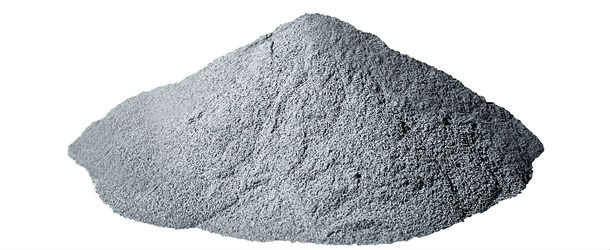
Metals are the fastest-growing segment of 3D printing. The growth of additive manufacturing is tied to business opportunities and, directly, the materials available and their costs. Low-cost metal powders are the key enablers for 3D printing, to realize its potential and transform industrial production. Available metallic powders for additive manufacturing are mostly those being used in a range of applications (medical, aerospace, jewelry, automotive, etc.). A significant issue is the progressive degradation of metal powders during processing as a result of the powder bed being exposed to oxygen and other contaminants. There is large potential demand for cost-effective methods of reconditioning metal powders.
Metal additive manufacturing systems manufacturers (EOS, Concept Laser, ARCAM, etc.) supply approved material powders, but many powders are likely atomized elsewhere, and the cost is greater than purchasing directly from a powder manufacturer. Water atomization is the most common and economical technique to produce metal powders. The high water pressure that impacts more energy into a molten metal stream, combined with a rapid cooling rate, give rise to powder particles that are tough and irregular in shape.
]]>